NATION BRANDING: GEOLOGICAL PLATES

Plates made with Luxembourgish clay
The "Geological Plates" project was part of my internship at Yellow Ball.
Framework
“Nation Branding” is a department of the Luxembourgish Ministry of Foreign and European
Affairs. The vision of this department is to position Luxembourg as a committed player on the international scene, for sustainable growth and innovative ideas that contribute to a better world.
Affairs. The vision of this department is to position Luxembourg as a committed player on the international scene, for sustainable growth and innovative ideas that contribute to a better world.
Local products play an important role in representing the values of Luxembourg on the international scene. The Nation Branding department therefore looks for local products that are sustainable and supported by strong storytelling.
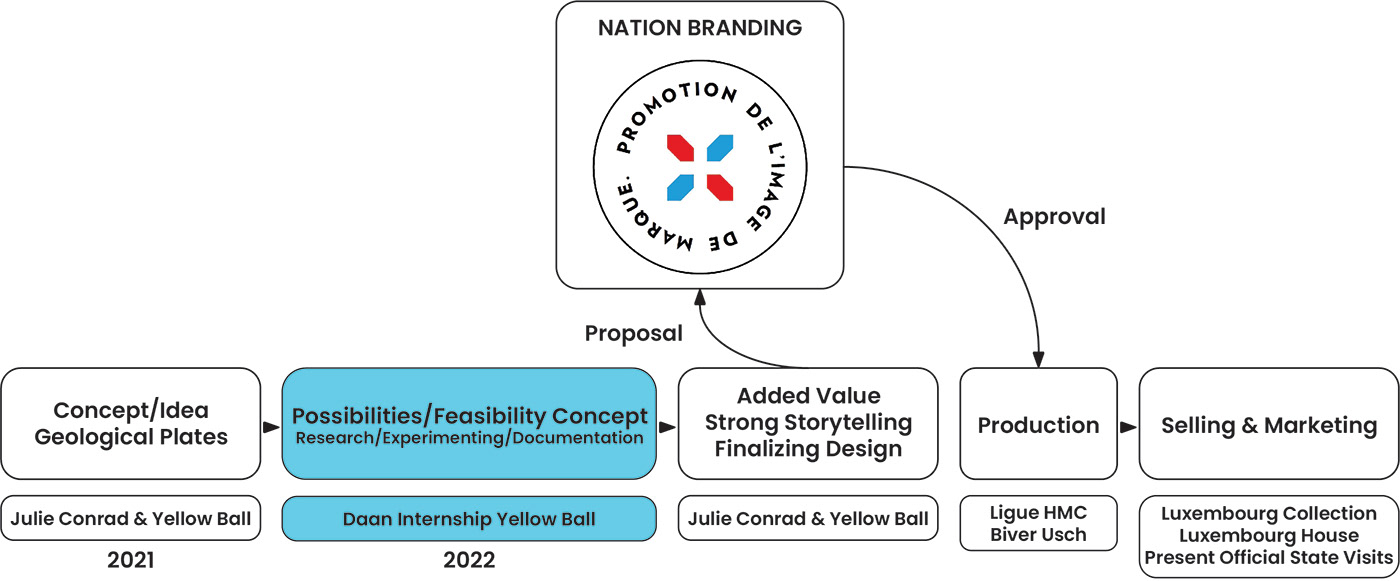
Background project “Geological Plates”
Within the Nation Branding framework Jan Glas (CEO Yellow Ball) and Julie Conrad (Luxembourgish designer) researched in 2021 local and sustainable products and manufacturers. They also established a cascade of evaluation criteria for products to meet the requirements set in the “Nation Branding” initiative. This research resulted in a series of product concepts that represent the values, history and heritage of Luxembourg.

Concept Image “Geological Plates”
One of these product concepts (see image above) is using raw materials from three important geological layers (see image down below) and regions in Luxembourg: limestone from the North, sandstone from central Luxembourg and iron ore from the South, to make a set of three ceramic plates. Each plate would have the color of the originating geological layer. The project emerging from this product concept is called “geological plates” and was the main project during my internship at Yellow Ball.

The three important geological layers in Luxembourg that contributed to the economic wealth of Luxembourg
As sustainability plays an important role in “Nation Branding” and ceramic products cannot
be recycled it is essential that the storytelling of the product provides added value that exceeds its mere functionality.
The story would refer to the geological heritage and history of Luxembourg (see images down below), focusing on the importance of extraction of limestone, sandstone and iron ore for the economic development of the country in the 19th and 20th century. In addition, the story emphasizes that domestic expertise and craftsmanship are essential to realize the “geological plates”. In supporting the actual product with the story we aim to increase the product lifespan.
be recycled it is essential that the storytelling of the product provides added value that exceeds its mere functionality.
The story would refer to the geological heritage and history of Luxembourg (see images down below), focusing on the importance of extraction of limestone, sandstone and iron ore for the economic development of the country in the 19th and 20th century. In addition, the story emphasizes that domestic expertise and craftsmanship are essential to realize the “geological plates”. In supporting the actual product with the story we aim to increase the product lifespan.

Slate mining was the biggest industry in the Grand Duchy of Luxembourg before steel production started in the south of the country.

The iron ore in Luxembourg was used to make steel “I” profiles that were used to build skyscrapers in America, for example.
Project description and results
My task and responsibility during this three-month internship at Yellow Ball is to research the feasibility of the “geological plates”-concept. This was to be achieved through experiments in order to develop a recipe to be able to produce the same plate repeatedly. The end product is mainly determined by the processing of clay soil, the proportion of glaze and minerals for the finishing and the baking cycle. All these elements were investigated during the project.


Glazes made with Luxembourgish minerals

Before Firing

After Firing

Before Firing

After Firing


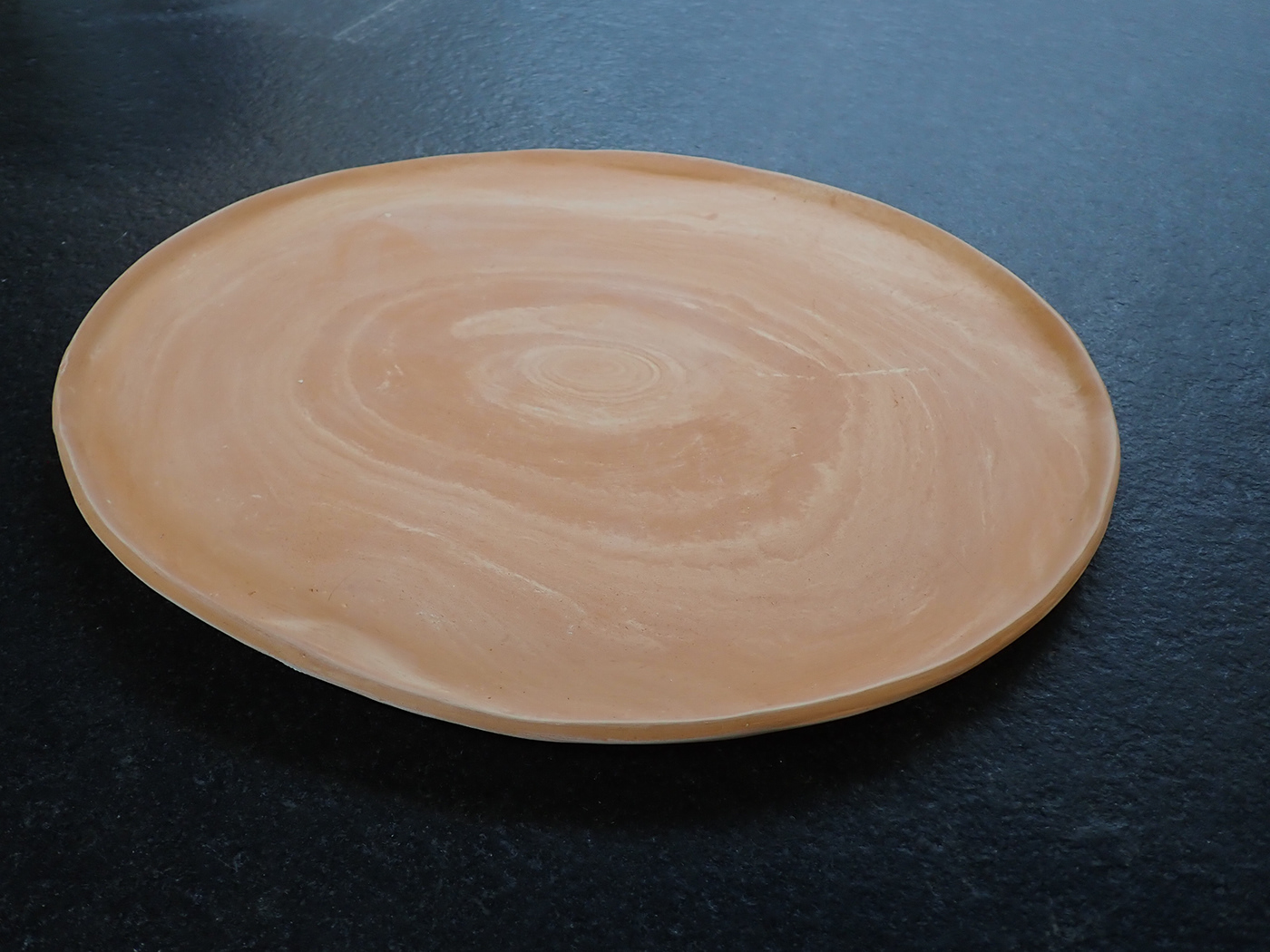
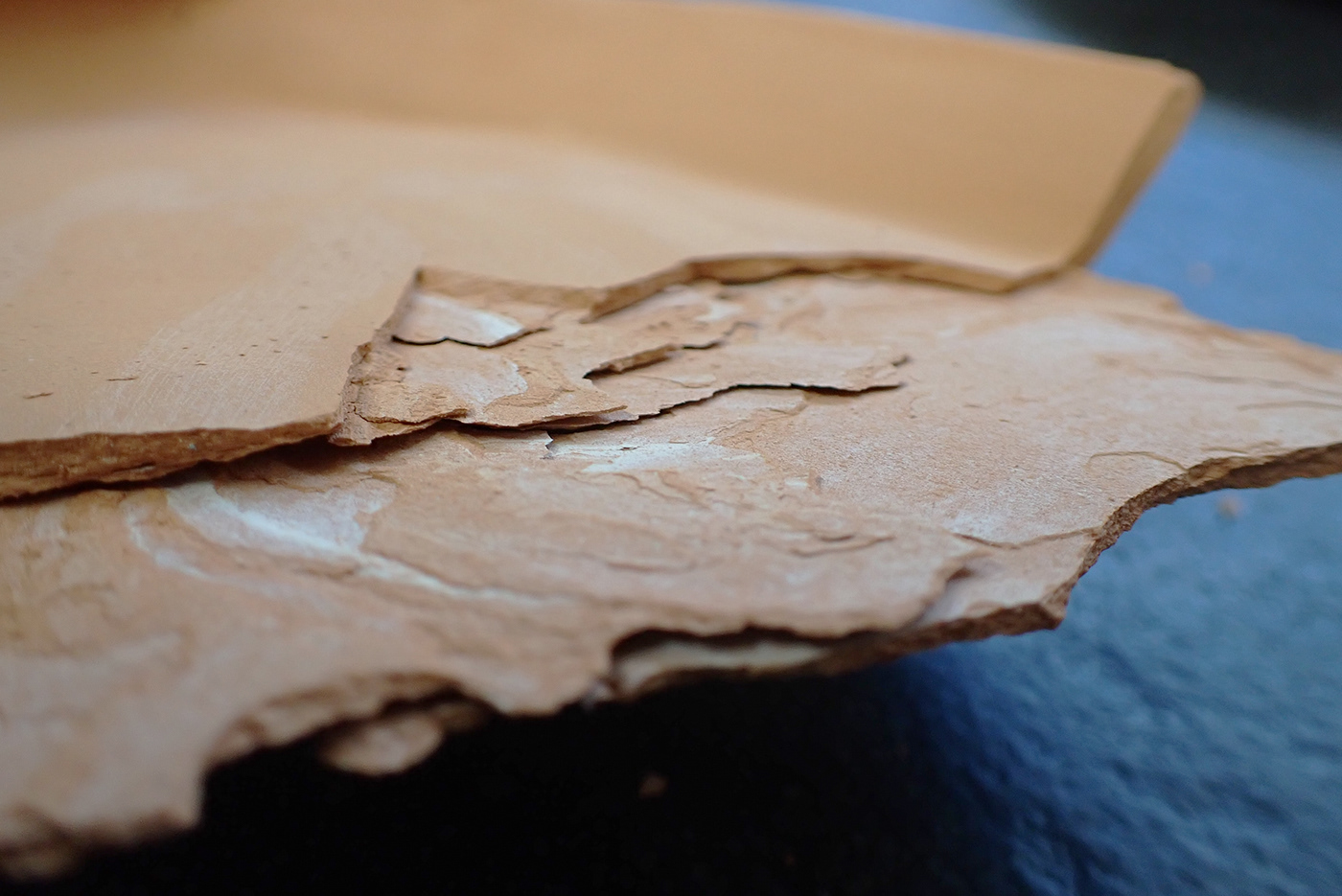
Learning from mistakes

Color gradients before firing

Color gradients after firing
I was fully responsible for bringing this project to a successful end: from gathering the necessary knowledge to networking and collaboration with different parties, from preparing and executing experiments to managing a limited budget and a tight schedule.
To be able to experiment in a structured and informed manner, I took the initiative of putting a lot of time and effort in gathering and absorbing knowledge about clay, minerals, glaze and the firing process from various sources on the internet and from different specialists by visiting and interviewing them. Among these were a geologist, a ceramist who works with wild clay from Nospelt, a ceramist with 40 years of experience with making glazes and an expert on the history of pottery in Nospelt. This turned out to be a crucial step for saving time and making fast decisions based on their experience and knowledge. These preparatory steps were essential for the success of this project.

Local ceramist Biver Usch with years of experience modeling with Luxembourgish clay

Kandel Ed expert on the history of pottery in Luxembourg

Henriquet J.Claude is a ceramist with 40 years of experience with making glazes and working for Villeroy & Boch

Romain Meyer is a geologist who provided me with valuable knowledge on Luxembourgish minerals
I also spent much time on locating, excavating, filtering and processing wild clay (clay that is found in nature) and minerals from different regions in Luxembourg in preparation for my experiments. At the atelier of Ligue HMC I did extensive testing of the properties of wild clay, the different ways of coloring clay and the color changes of mineral glazes after the firing process. These steps were necessary to verify that my raw materials could be used for pottery and glazes. The experiments turned out to be successful resulting in several plates and color samples.
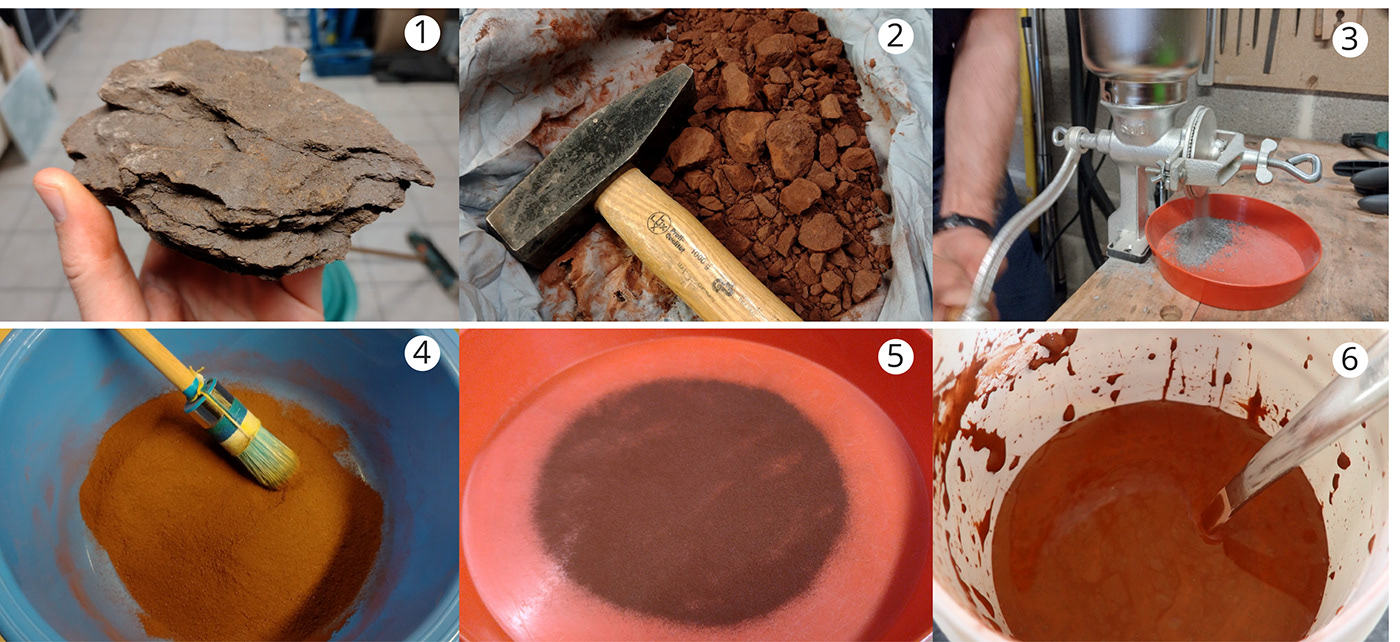
Processing minerals

Processing wild clay (clay that is found in nature)

Location scouting for minerals and clay

Location scouting for minerals
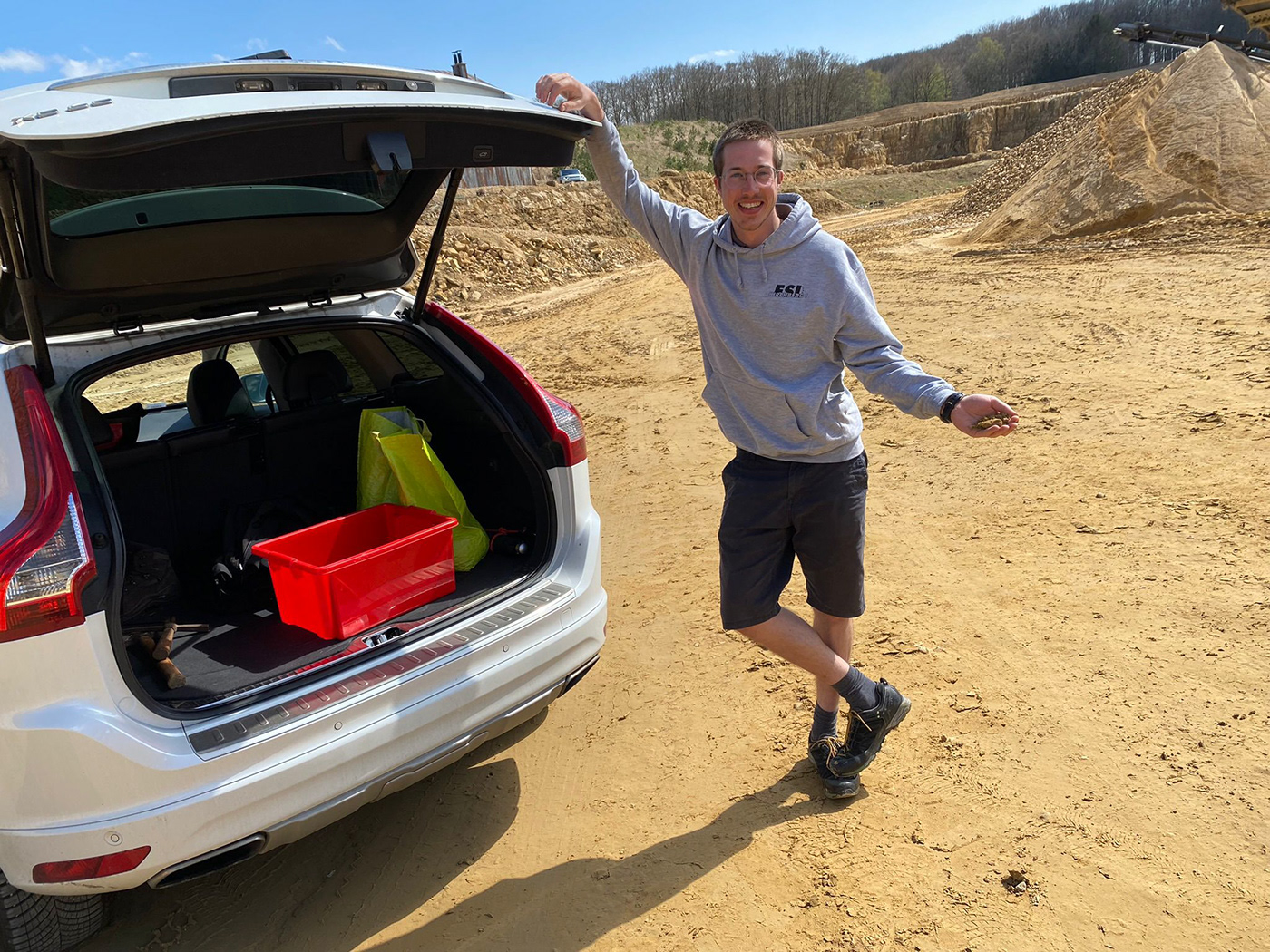
Location scouting for minerals
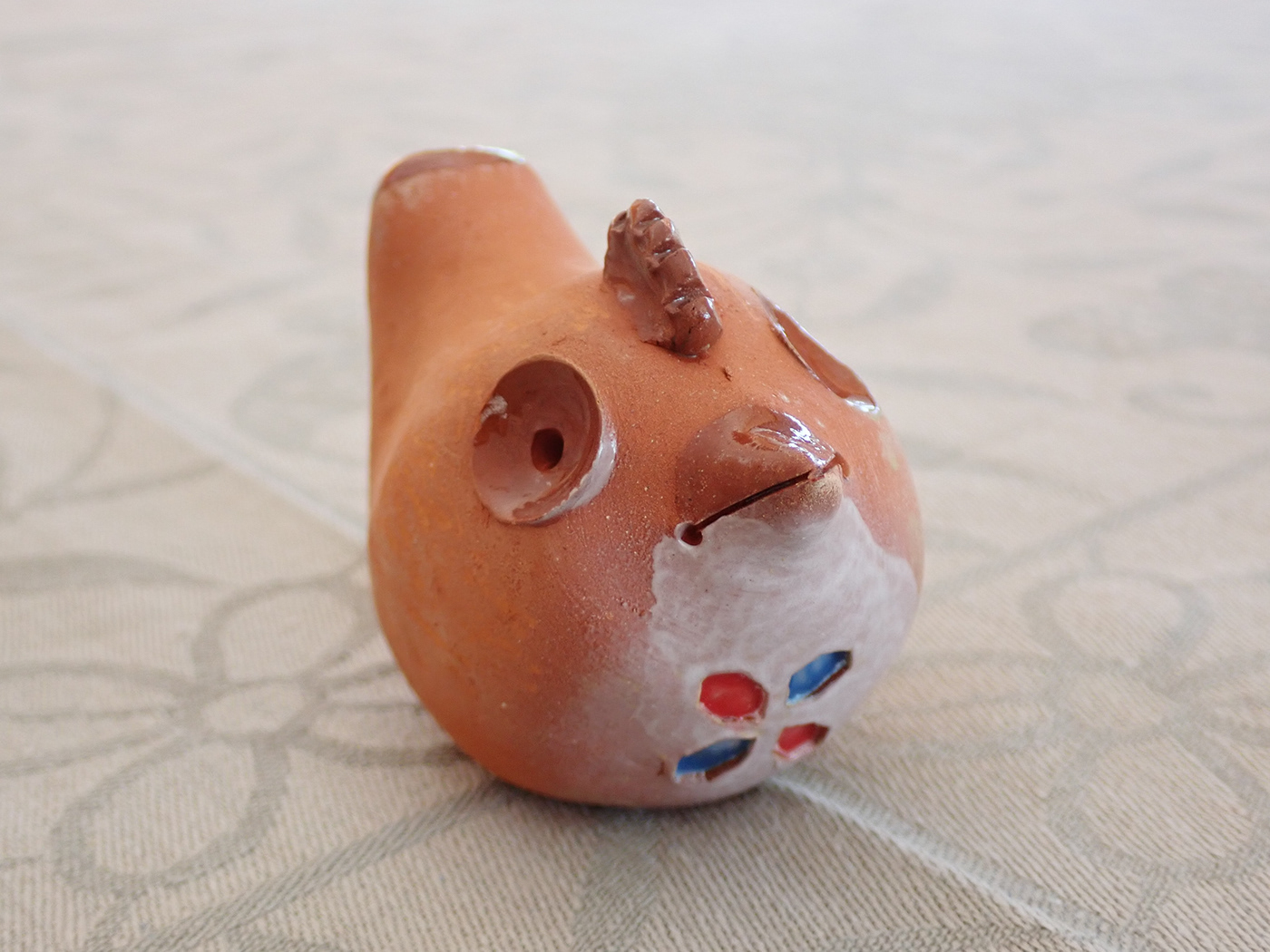
Finally, I documented all the results of the research and the experiments in detail in a report that will be used as the foundation for putting into practice future production, development, selling and added value storytelling of the final product.
